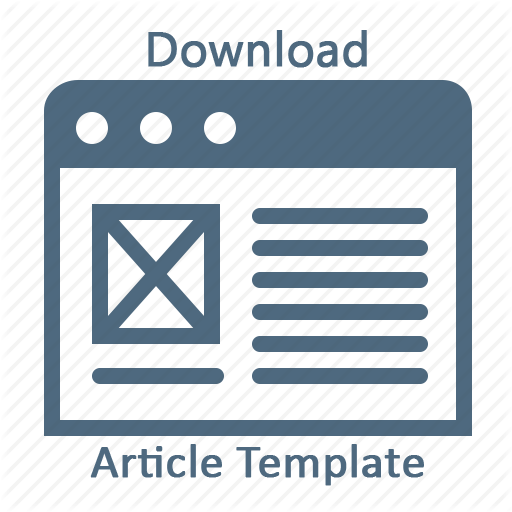Implementation of Blended Learning Model in Improving Learning Outcomes of Listening
DOI:
https://doi.org/10.37985/jer.v4i4.523Keywords:
Model Of Learning, Listening Skills, Blended Learning, PandemicAbstract
The application of the blended learning model in learning listening skills described to know the learning outcomes and student responses is the aim of this study. The equivalent type of time series quasi-experimental design is the design model used in this study. The samples of the study were twenty one students from the S1 Indonesian Language and Literature Education in the academic year of two thousand nineteen by a purposive sampling method. The outcomes showed that there was an increase in the average student learning outcomes at each level. The result is evidence of improved learning outcomes. From the results of stude nt responses as a whole, students feel enthusiastic due to the blended learning model application which makes them enjoy the process of the learning more. There are eighty-five percent of students enthusiastic due to the blended learning model application which makes them enjoy the process of the learning more, which makes students more motivated, their interest increases, and there is also an increase in students' learning awareness by the application of the blended learning model in listening skills.
Downloads
References
Aji, W.,N and Sri Budiyono. (2018). The Theacing Strategi of Bahasa Indonesia in Curriculum 2013. International Journal of Active Learning. 3 (2). 58-64
Aji, W.,N. (2020). APLIKASI Tik Tok Sebagai Media Pembelajaran Keterampilan Bersastra. Jurnal Metafora. Vol VI (2). 147 – 157. DOI: 10.30595/mtf.v6i1.7824
Bentley, D. C., Robinson, A. C., & Ruscitti, R. J. (2015). Using guided inquiry and the information search process to develop research confidence among first year anatomy students. Anatomical Sciences Education, 8, 564–573. doi https://doi.org/10.1002/ase.1527
Budiyono, S., Waluyo, H.J., Slamet, St. Y., and d, Rohmadi, M. (2016). The Text-Based Indonesian to Stimulate Achievement and Motivation (A Textbook for the Seventh Graders of Junior High Schools). International Journal of Science and Research (IJSR), 5 (11). pp. 1596-1599. ISSN 2319-7064
https://www.ijsr.net/archive/v5i11/ART20163114.pdf
Budiyono, S., Waluyo, H.J., Slamet, St. Y., and d, Rohmadi, M. (2018). Text-based Language Learning to Improve Student Motivation and Achievements. American Journal of Humanities and Social Sciences Research (AJHSSR), 2 (11). pp. 27-34. ISSN 2378-703X https://ajhssr.com/wp-content/uploads/2018/11/D182112734.pdf
Budiyono, S., Pranawa, E., and Yuwono, S.E. (2021). Language as a Communication Tool, Motivation, Achievement, Negotiation, and Business Professionally. Seminar Nasional Riset Linguistik dan Pengajaran Bahasa (SENARILIP V) 5-6 Nov 2021. pp. 73-78.
https://ojs2.pnb.ac.id/index.php/proceedings/article/view/219/123
Curtis J. B. (2006). The Handbook of Blended Learning. USA: Preiffer.
Driscoll, M. and Carliner, S. (2005) Advanced Web-Based Training Strategies. Blended Learning as a Curriculum Design Strategy. ASTD Press, New York.
Elaine Allen, Jeff Seaman, and Richard Garrett. (2007). Blending In The Extent and Promise of Blended Education in the United States. Sloan-C™.
Graham C. R. (2006). Blended Learning Systems: Definition, Current Trends, and Future Directions. Dalam C. Bonk & C. Graham (Eds.), The Handbook of Blended Learning: Global Perspectives, Local Designs. San Francisco: Pfeiffer. 3-21.
Heinze, A. (2008). Blended Learning: An Interpretive Action Reseach Study. Salford: University of Salford.
Husamah. (2014). Pembelajaran Bauran (Blended Learning). Malang: Prestasi Pustaka.
Istiningsih, Siti and Hasbullah (2015) Blended Learning, Trend Stategi Pembelajaran Masa Depan. Jurnal Elemen. 1 (1), 49-56 doi: https://doi.org/10.29408/jel.v1i1.79
Mana, L. H. A., Titiek F., (2020) Pengembangan RPKS dan SAP Menyimak Berbasis Pendekatan Contekstual Teaching dan Learning. Jurnal Grmatika 2 (2)(84-100) doi.org/10.22202/JG.2016.v2i2.986
Nada Dabbagh dan Brenda Bannan. (2005). Online learning Concepts, Strategies, and Application. New Jersey: Pearson Education
Pebryawan, Krisna and Luwiyanto. (2019). Dongeng sebagai Sarana Pembentukan Kepribadian pada Era Disrupsi (Fairy Tales as a Means of Personality Formation in the Era of Disruption). Journal Lensa. Vol 9 (1), 1-14 DOI: https://doi.org/10.26714/lensa.9.1.2019.1-14
Plomp, Tjeer and Donald P. Ely. (1996). International Encyclopedia of Educational Technology. Cambridge: Elsevier Science Ltd
Rachman, A., Yusep S, Dedi R (2019) Penerapan Model Blended Learning dalam Peningkatan Hasil Belajara Menggambar Objek 2 Dimensi. Journal of Mechanical Engineering Education, Vol.6, No. 2, 145-152 doi: https://doi.org/10.17509/jmee.v6i2.21784
Sugiyono. 2015. Metode Penelitian Kombinasi (Mixed Methods). Bandung: Alfabeta
Sutisna, A. (2016). Pengembangan Model Pembelajaran Blended Learning pada Pendidikan Kesetaraan Program Paket C dalam Meningkatkan Kemandirian Belajar. JTP- Jurnal Teknologi Pendidikan, 18(3), 156-168. doi: https Education, 12(5), 1097–1109.
Downloads
Published
Check index
How to Cite
Issue
Section
Citation Check
License
Copyright (c) 2023 Wisnu Nugroho Aji, Krisna Pebryawan, Sri Budiyono, Agus Yuliantoro, Suhud Eko Yuwono

This work is licensed under a Creative Commons Attribution-ShareAlike 4.0 International License.
Authors who publish with this journal agree to the following terms:
- Authors retain copyright and grant the journal right of first publication with the work simultaneously licensed under a Creative Commons Attribution-ShareAlike 4.0 International License that allows others to share the work with an acknowledgement of the works authorship and initial publication in this journal.Â
- Authors are able to enter into separate, additional contractual arrangements for the non-exclusive distribution of the journals published version of the work (e.g., post it to an institutional repository or publish it in a book), with an acknowledgement of its initial publication in this journal.
- Authors are permitted and encouraged to post their work online (e.g., in institutional repositories or on their website) prior to and during the submission process, as it can lead to productive exchanges, as well as earlier and greater citation of published work (See The Effect of Open Access).









